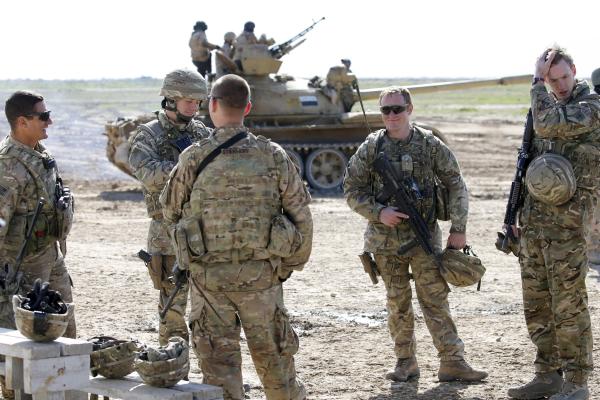BESMAYA – U.S.-led coalition forces training Iraqi soldiers to fight ISIS are applying lessons from last month’s recapture of Ramadi to prepare the army to retake the northern city of Mosul later this year.
Iraq’s elite counter-terrorism forces pushed the insurgents out of most of Ramadi, in the Euphrates river valley west of the capital, after a six-month siege in which roadside bombs laid as densely as conventional minefields slowed the military’s advance to a crawl.
Now the army’s 72nd infantry brigade is receiving training in combined arms breaching – a mixture of tactics used to overcome such obstacles – as part of a 10-week course at Besmaya, a base south of Baghdad.
That will make it the army’s best-trained brigade and equip it for a key role in the government’s promised offensive to retake Mosul, Iraq’s second largest city, from ISIS.
If successful, that would mark the biggest military blow against the jihadists since they seized large parts of Iraq and Syria in 2014 and declared an Islamic caliphate, where they have carried out mass rape, beheadings and slaughter.
The 72nd will set the standard to which others should be equipped, said U.S. Army Lieutenant General Sean MacFarland, the Baghdad-based head of the anti-ISIS coalition.
“One hundred percent this (training) is based on the lessons that we learned watching the challenges in Ramadi and Tikrit and Sinjar and Baiji where the enemy had obstacle belts,” MacFarland told reporters this week, referring to cities retaken from IS in recent months.
“It’s about breaching obstacles just like we do in conventional manoeuvres,” he said during a visit to observe a live-fire exercise at Besmaya, where most of the coalition trainers are from Spain and Portugal.
Soldiers advancing across the training site in armoured vehicles stopped behind an earthen embankment and launched a line of explosive charges to clear bombs planted on the other side. After a large blast sent up a dark plume of smoke, they proceeded with a bulldozer to clear remaining obstacles.
Using a mix of machine guns and snipers, the forces attacked a simulated enemy before advancing into an urban combat scenario as Iraqi and coalition commanders watched from observation platforms.
They used equipment and arms drawn from a $1.6 billion train-and-equip fund that Washington began delivering last summer.
Despite billions of dollars in U.S. aid since the 2003 invasion that toppled Iraqi leader Saddam Hussein and disbanded his army, Iraq’s military collapsed eighteen months ago in the face of Islamic State’s lighting advance across Iraq’s north and west.
The government has since relied heavily on Iranian-backed Shi’ite militias, a small group of elite commandos and support from coalition air strikes to secure Baghdad and southern Shi’ite shrines and then push the insurgents out of key cities like Tikrit and Ramadi.
“We start almost from scratch with the basic individual skills: how to move, how to protect, how to shoot,” said Spanish Army Lieutenant Colonel Pedro Erice, a senior trainer at Besmaya. “The period of time is short. You can’t try to reach big objectives.”
Washington last week said coalition countries needed to step up their contributions, including police and military trainers.
But with its ranks worn down by fighting and the demands of a fierce existential war showing no signs of relenting, there are concerns that Iraq’s army cannot fit in as much training as it needs.
“We’ve got plenty of trainers here. We could do plenty of training. But of course the Iraqis have still got to fight a war and maintain security, particularly in places like Baghdad,” said British Army Brigadier General James Learmont, deputy head of the coalition’s land component.
“It’s always a fine balance between what we can actually get into the training sites and obviously what they need to fight the war.”
Learmont said he also expected battlefield constraints would make it hard for the brigades to periodically refresh their training.
It was not immediately clear where the 72nd Brigade will deploy when its course ends, but banners affixed to vehicles read “Nineveh liberation operations command”, referring to the province where Mosul is located.
Prime Minister Haider al-Abadi has vowed to retake Mosul, the largest city under ISIS control, later this year. Falluja, a militant stronghold about 50 km (30 miles) west of Baghdad, could be the next target before that.
“They’ve finished with us and they’ve gone straight into the fight in Ramadi,” Learmont said of previous training classes. “They will finish here and they’ll go into the frontlines. One could classify that as on-the-job training.”
Asked how well the training was preparing the Iraqis, he said they had acquired “lifesaving skills that will help them to defeat Daesh (IS) but also actually to stay alive themselves”.

